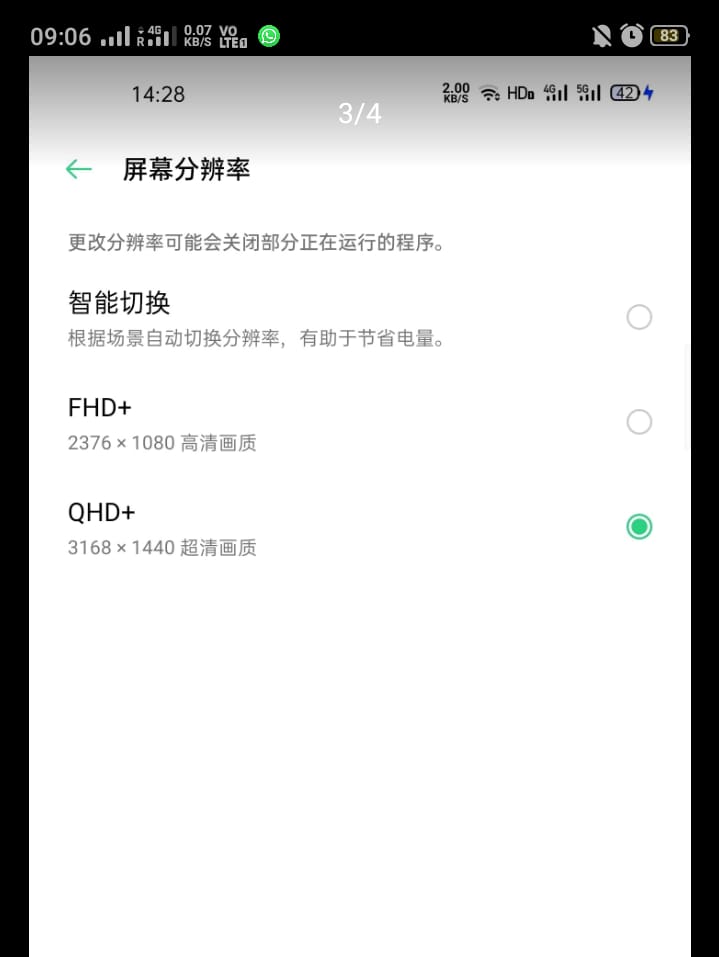What is Quad HD, QHD+, QHD, 720p HD, Full HD, 4K UHD and all of those other mobile display terms being thrown about these days? We explain and compare these screen resolution values to see what they really mean and what the difference in screen quality is.
Lots of the biggest smartphones in 2017 boast something called a ‘Quad HD’ display, including Samsung’s Galaxy S7 and the mighty Pixel XL handset from Google. To the average consumer, that’s nothing more than techy jargon, so we’ve written this guide to smartphone displays to help you understand what Quad HD, QHD, QHD+, UHD and other mobile display terms actually mean, and what difference there is between them.
[07/02, 09:08] Hi: What is Quad HD?
Quad HD is another name for WQHD, which stands for ‘Wide Quad High Definition’. Catchy, right?
What this actually refers to is the number of pixels crammed into your mobile phone’s screen. The more pixels you have, the sharper movies and photos and everything else will look on your handset’s display.
Quad HD screens have a 2,560×1,440 pixel resolution. This is four times the number of pixels you get on a standard HD panel (720p), hence the name. Quad HD screens aren’t as sharp as 4K Ultra HD displays, however, as we’ll see later.
in mobile phones, which are now often used to enjoy video on the move.
What is QHD and is it the same as Quad HD?
The term QHD originally stood for Quarter High Definition, which refers to any display packing a resolution of 960×540. That’s precusely one quarter of the number of pixels found in a Full HD screen (1920×1080). Older phones like the HTC Desire 601, the Samsung Galaxy S4 Mini and the Sony Xperia M2 have QHD screens.
Of course, QHD screens on mobile phones are thankfully fast becoming a thing of the past, as even basic budget phones now sport at least a 720p HD screen (1280×720). This makes for much sharper images.
However, you might now see some of the latest smartphones packing a ‘QHD’ screen according to their manufacturers or retailers. This will almost certainly mean the mobile in question has a Quad HD screen (2560×1440), rather than the old Quarter High Definition resolution. Slightly baffling, but at least that older tech is basically obsolete to avoid any real confusion.
What is QHD+?
In 2017 we’re starting to see the emergence of QHD+ phone displays. These are longer than typical mobile screens, giving a widescreen appearance which is better suited to movies.
The exact resolution of a QHD+ screen will depend on its aspect ratio, but you can expect supremely crisp visuals no matter what. For instance, the LG G6 enjoys an 18:9 aspect ratio (or 2:1 to put it more simply), and a screen resolution of 2880×1440.
The G6’s QHD+ panel is just as sharp as the Note 7’s screen, which boasts a 2560×1440 Quad HD resolution and the same size of screen. The G6 just needs more pixels to accomodate that extra length.
What is 4K, or UHD?
4K, or 4K Ultra HD to give it its full title, refers to screens with a resolution of 3,840×2,160. This is four times as many pixels as you’ll find in a 1080p Full HD (1920×1080) panel.
This is why we think ‘Quad HD’ is a slightly daft name – it’s too easy for people to mistake it for 4K.
4K Ultra HD is in the news a lot at the moment, because the next generation of HD TV broadcasts will be shown at 4K resolution. The likes of Netflix already has some 4K content and soon you’ll be able to watch Sky channels in 4K too
While a lot of phones are capable of recording video in 4K UHD, including the Galaxy S7 and Xperia Z5, there is only one mobile phone out there that boasts a 4K screen – the Sony Xperia Z5 Premium. However, the actual visual difference between the Z5 Premium and the standard Z5 is difficult to spot with the naked eye, as mobile phone screens are so small.

